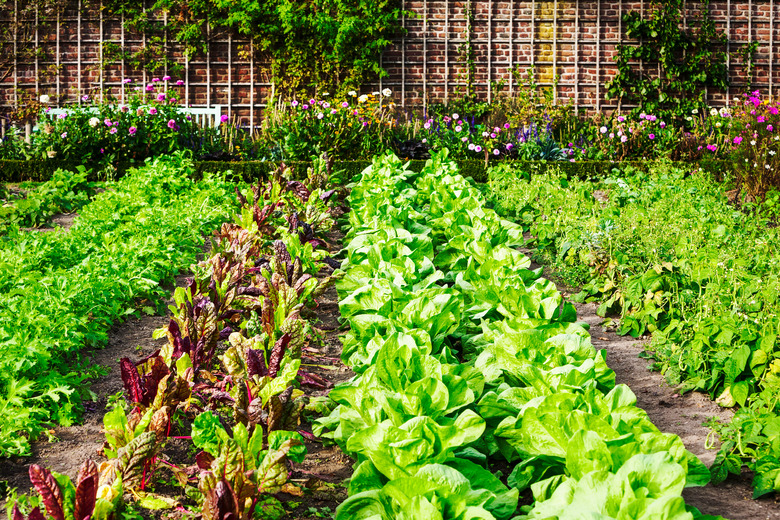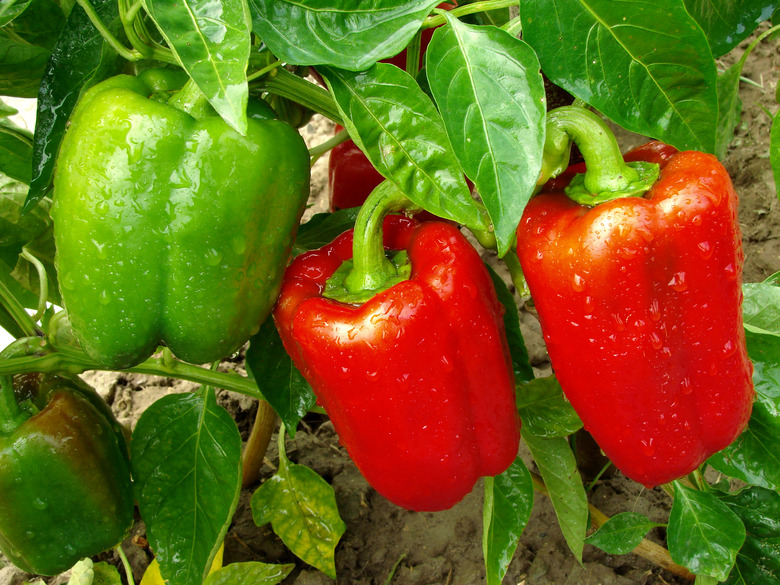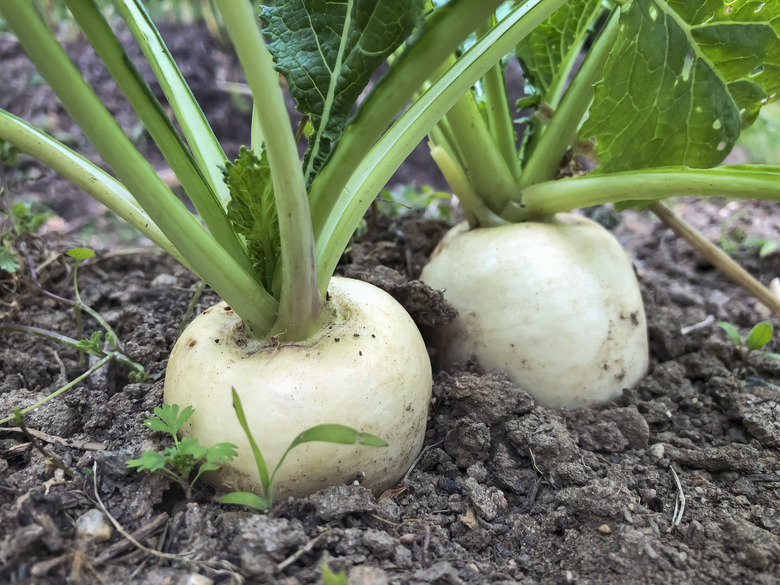When To Plant Vegetables: A Seasonal Guide
We may receive a commission on purchases made from links.
Many home gardeners opt to carve out some space to plant vegetables, and doing so is well worth the effort. Nothing tastes quite as good as vegetables you've grown yourself, and they certainly don't get any fresher than right off the vine. Even if you don't have a lot of space, many vegetables grow well in containers. You don't have to miss out on vegetable gardening just because you live in an apartment or condominium.
You can work around limited space, but the weather is a little harder to manipulate. Some vegetables like cool weather, while others simply don't get going until the weather warms up later in the season. The secret to success isn't so much where you plant vegetables but when you plant them. Timing really is everything when it comes to planting veggies, and the right timing often depends on the U.S. Department of Agriculture plant hardiness zone in which you live.
Vegetables to Plant in Late Winter and Early Spring
Vegetables to Plant in Late Winter and Early Spring
Cool-season vegetables are an avid gardener's best friend. They're planted super early in the spring as soon as the ground is workable, giving cooped-up outdoor lovers an excuse to get out of the house and play outside. Cool-season vegetable seeds germinate best when the garden soil temperature is about 40 to 50 degrees Fahrenheit, and you can usually sow them about four weeks before your area's last expected frost.
If you live in USDA plant hardiness zones 3 or 4, this usually means you can start your cool-season vegetables in early April. Gardeners in zones 5 through 7 can sow cool-season vegetable seeds in March, and those in zone 8 have sowing dates in February. In zones 9 and 10, you can even get away with January plantings.
If you live in a warmer zone, cool-season vegetables may not work for you. These vegetables thrive in cold weather but stop producing and go to seed (a process called bolting) when the temperatures warm to about 80 degrees. If you want to try growing a cool-season vegetable in a warm zone, remember to see how long that particular variety takes to mature. This will ensure that your cool season is long enough to allow the plant to produce. In some warm climates, cool-season veggies are best planted in late summer for a fall or winter harvest.
Cool-season vegetables include:
-
Beets (Beta vulgaris)
-
Broccoli
(Brassica oleracea [Italica Group]) -
Lettuce (Lactuca sativa)
-
Onions
(Allium cepa) -
Potatoes (Solanum tuberosum)
-
Carrots (Daucus carota subsp. sativus)
-
Parsnips (Pastinaca sativa)
-
Spinach (Spinacia oleracea)
-
Radishes (Raphanus raphinistrum subsp. sativus)
-
Peas (Pisum sativum)
Vegetables to Plant in Late Spring and Summer
Vegetables to Plant in Late Spring and Summer
Like cool-season vegetables, warm-season veggies also have planting preferences. These vegetables tolerate the cold poorly, and you can't plant them until after the last frost has passed in your area. You must wait until both the air and soil temperatures stay above 50 degrees Fahrenheit at all times to plant these vegetables outside — usually about 2 weeks after your last frost.
If you want to speed the harvest, you can start the seeds inside about six to eight weeks before your area's last frost. You'll have to wait until after the frost to plant them outside, however. In zones 3 and 4, this means planting early in June. Those in zones 5 through 7 can plant in early May, and gardeners in zone 8 can shoot for early April plantings. Those in zones 9 and 10 can often get away with late February or early March plantings. Zone 11 is frost-free, so you can plant warm-season vegetables at any time.
Savvy gardeners who want to extend their harvest tend to keep planting warm-season crops all summer long. When you plant a few crops each week, each one comes ready to harvest at a slightly different time. This provides a steady stream of your favorite vegetables all season long and is called succession planting. Gardeners often do this with green beans (Phaseolus vulgaris) and sweet corn (Zea mays).
Other warm-season crops include:
-
Cucumbers (Cucumis sativus)
-
Zucchini (Cucurbita pepo)
-
Bell Peppers (Capsicum annuum)
-
Watermelon (Citrullus lanatus)
-
Eggplant (Solanum melongena)
-
Sweet Potatoes (Ipomoea batatas)
-
Tomatoes (Solanum lycopersicum)
Vegetables to Plant in Late Summer and Fall
Vegetables to Plant in Late Summer and Fall
Depending on where you live, fall is quite a busy time in the home garden. If you love cool-season crops, late summer and early fall are a good time to sneak in another harvest if you live in warmer climates. Simply plant vegetables late in the summer when the soil temperature dips back down to 75 degrees Fahrenheit or lower. As long as you pick a fast-growing crop that you can pick before the first killing frost, like lettuce or spinach, you can sneak in an extra fall harvest before it gets too cold.
In USDA zones 3 through 6, gardeners should aim to collect their late-season harvest in September or October. Those in zones 7 and warmer, however, shouldn't expect damaging amounts of frost until November or even December in some regions.
Vegetables to Plant in Winter
Vegetables to Plant in Winter
In some areas, the winter garden feels barren and deserted, but those living in warmer climates can keep planting. Others can at least continue to harvest.
Root vegetables, such as carrots and turnips, often do just fine in the winter. As long as they're covered by an insulating layer of mulch or snow, root vegetables keep even longer in the ground than they sometimes do in the refrigerator. If you've grown these crops in the fall and then left them in the ground, you can pop outside and pluck a fresh vegetable as needed all winter long.
Planting Perennial Vegetables
Planting Perennial Vegetables
There are a handful of vegetables that don't play by the typical vegetable rules. It's important to know about them, however, because they're both tasty and nutritious. While most gardeners grow vegetables as annuals, there are a few that are actually long-lived perennials. You can get a bountiful harvest from these perennial vegetables for several years before the plant dies and needs to be replaced.
For best results, plant perennial vegetables in the spring after the danger of frost has passed. This will give your young plants plenty of time to get established before winter weather strikes.
When planting vegetables as annuals, you can generally plant any vegetable you'd like as long as it has time to complete its growing cycle before the temperatures change and conditions become unfavorable. Perennial vegetables are a bit more restrictive, however, because you'll need to choose varieties that can survive the winters in your region.
Gardeners in zones 7 through 10, for example, may wish to grow artichokes (Cynara cardunculus). Asparagus (Asparagus officinalis) grows as a perennial in zones 3 through 8 or 9, and rhubarb (Rheum rhabarbarum) grows in zones 3 through 7. Your local garden center or nursery is one of the best places to learn about perennial vegetables that grow well in your area.


